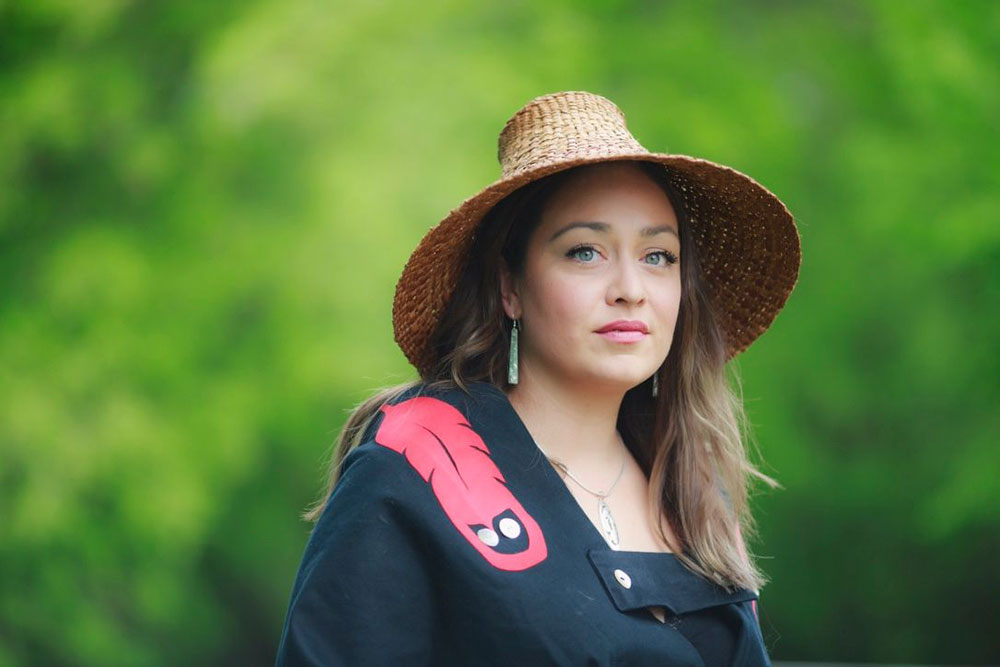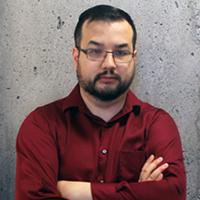Turn a light on in B.C., and you’re almost definitely doing it thanks to a hydro dam.
It’s a power source the province relies on for about 91 per cent of its energy — though many British Columbians may not give a second thought to its source.
For First Nations and other communities whose lands were flooded or are under threat of flooding due to these projects, however, hydro power is top of mind.
Two Indigenous documentary filmmakers have each created projects that will premiere for the first time in B.C. at DOXA Documentary Film Festival this month, sharing a common thread on the consequences of hydro power.
In DƏNE YI’INJETL (“The Scattering of Man”), director Luke Gleeson, a member of the Tsay Keh Dene Nation, unveils the story of the people who were forcibly relocated from their ancestral territory when the Williston Reservoir and the W.A.C. Bennett Dam were created in the 1960s. In the process of putting up these hydro power projects, the government of the time flooded 175,000 hectares of Indigenous territory, including villages, hunting and fishing grounds, and culturally significant sites.

Decades later, a new government may be set for a repeat of this history, as Haida filmmaker Heather Hatch explores in Wochiigii lo: End of the Peace. Hatch’s movie takes a deep dive into the murky waters of the controversial Site C dam, started under the Christy Clark government and set to finish under John Horgan’s now-majority NDP. Yet even as politicians point to this project as “past the point of no return,” the West Moberly First Nations are staking out one last hope of halting the project through a bitter court battle.
DOXA Documentary Film Festival is spotlighting Gleeson’s movie and others under the heading “Landscapes of Resistance,” named for another documentary, directed by Marta Popivoda of Serbia, that will be showing at the festival in Vancouver, alongside Bill Reid Remembers and Honour to Senator Murray Sinclair, by Alanis Obomsawin, Beyond Extinction: Sinixt Resurgence, by Ali Kazimi, and The Territory, by Alex Pritz.
We spoke with Gleeson and Hatch about their films ahead of their B.C. premieres at DOXA. This interview has been edited for length and clarity.
The Tyee: With both of your films, we’re seeing a very literal landscape shift, and a literal landscape of resistance, but I wanted to ask you each how the theme comes out more metaphorically in your work.
Luke Gleeson: I kind of look at it more in a spiritual sense, in terms of the resiliency and the independent and strong nature that our ancestors passed down to us. For me, it’s the strength and dignity and the story of my people and what’s happened. The resistance, I think, is the strength of the human spirit to resist the oppressive nature of this global arena that we’ve entered into, where things from far away can heavily impact others, and yet, there’s no direct trail or pathway that leads to it.
We’re connected to the land in a very, very special way. Sometimes that’s extremely difficult to articulate to people, especially when you look out at something and you see a living, breathing thing, something that’s related to you. You try to relay your emotions on that to somebody who’s potentially looking out and seeing trees and resources and ways to manipulate environments, and not necessarily for the benefit of the land, but for the benefit of people down the line that maybe have no idea of what’s really happening.
Heather Hatch: These are two stories that are connected, but different. I think Luke’s film is very spiritual with the story that’s threaded throughout it, and all the beautiful images, and the realities. And I feel like my film is very much a juxtaposition of what he’s talking about, of what one person sees versus how the people that occupy the land see it. I think we are removed from our connection to nature, just in the way that we learn from it. When you’re trying to explain why this topic is so important, I think being able to give voice with such a big story with these two films, connected — maybe it opens up the conversation is my hope.
Something that really struck me about both of your pictures is that you make use of a lot of shots of the landscape itself. Can you speak to what those shots in particular meant to you in a personal sense, and also in the sense of the documentaries?
LG: For me, the territory was always a main character of the film, right from the beginning. I wanted to open big with the country and leave big with the country. It’s really difficult to convey that emotion that I mentioned earlier, so I wanted big shots. I wanted a lot of still shots, but then the shots where you’re moving and you’re a part of that movement in the country. We wanted to create a real cinematic feel to it. Less of a talking head documentary, and more of just the story that it is and conveying that connection that we have. Some people think it’s a sad story. I think it’s a powerful story of strength and beauty.
HH: A lot of these shots that, probably, you felt really intimate with the land — some of them I didn’t do. I was given a lot of hard drives from people who live there, who shot for the band that I focused on: Moberly Lake. Those intimate views of the river and land — some are from my director of photography, but some are from other filmmakers, videographers. I found it really important to let those images have a voice outside of what I saw, because I’m not from here. I’m from Haida Gwaii. So I was looking in on their story and territory. I really wanted to pull out how they felt about the land with their footage.
Can you speak to what it means to have your films now finally premiering in the province where they take place?
HH: This is a story that seems to fly under the radar somehow, that this is happening in Canada. We already know how this can affect people. Luke, it’s been with you for many, many years. And it’s happening still. I think, across Canada, they’re like, “Oh, my goodness,” but in B.C., they already know that they’re doing this to us. There’s a lot of complicated things to see.
LG: We’re really happy to be a part of DOXA. It was one of the festivals on our shortlist of festivals we wanted to get into. I do think there’s a lot of people in the Lower Mainland that have no idea where their power comes from. They have no idea of the impacts. I’ve worked with countless people over the years who come up to Tsay Keh and they don’t really realize that they’re looking out at a cultural tomb. You can be fooled into the beauty of something, that it’s really dressed in quite a painful memory and history. It would have been quite a shame if neither of our films really got much of a movement in British Columbia, because I think it’s definitely a place that people really need to hear these stories and hear about some of these impacts.
Do you think that because the projects at the centre of these tragedies are billed as green energy that makes it harder for a non-Indigenous public to both grab onto these issues and be aware of these issues?
HH: I think it’s not just the way that green energy is being presented, but the way we’ve been conditioned to think in a colonial and capitalist world that “these things are more important than these things.” It’s a way of thinking that has been taught and we’ve all agreed to, and I think that these films help us to question when you’re told something. You see the broader and different pictures and different understanding of the world around you, even through the language and the way we see the image. But yes, I think you’re not just up against green energy, you’re up against a lot of ideas.
LG: Yeah, I don’t know how green a lot of this energy is.
HH: That’s the point. It’s not green but has the reputation.
LG: I mean, you can change your logo to have green and blue and run a bunch of PR campaigns, whatever, but when you see the impacts of these hydroelectric projects in British Columbia.... We know that there’s issues. I think anybody would probably know that where they’re gonna place Site C is a pretty terrible place to put a dam, and they’re running into all kinds of issues. And I see a lot of First Nations across Canada that have been greatly impacted by dams who have terrible water conditions, who have not reaped any sorts of great economic benefit from these projects. They’re not prospering.
It’s not just a simple thing. It’s that you’re using a natural resource. We can’t just plug everything up and act like there’s not going to be any sort of ramifications for the future.
'DƏNE YI’INJETL' and 'Wochiigii lo: End of the Peace' are available for in-person screenings and to stream through DOXA from anywhere in Canada, May 5 to 15. Learn more on DOXA’s website. ![]()
Read more: Indigenous, Film, Environment
This article is part of a Tyee Presents initiative. Tyee Presents is the special sponsored content section within The Tyee where we highlight contests, events and other initiatives that are either put on by us or by our select partners. The Tyee does not and cannot vouch for or endorse products advertised on The Tyee. We choose our partners carefully and consciously, to fit with The Tyee’s reputation as B.C.’s Home for News, Culture and Solutions. Learn more about Tyee Presents here.
















Tyee Commenting Guidelines
Comments that violate guidelines risk being deleted, and violations may result in a temporary or permanent user ban. Maintain the spirit of good conversation to stay in the discussion.
*Please note The Tyee is not a forum for spreading misinformation about COVID-19, denying its existence or minimizing its risk to public health.
Do:
Do not: